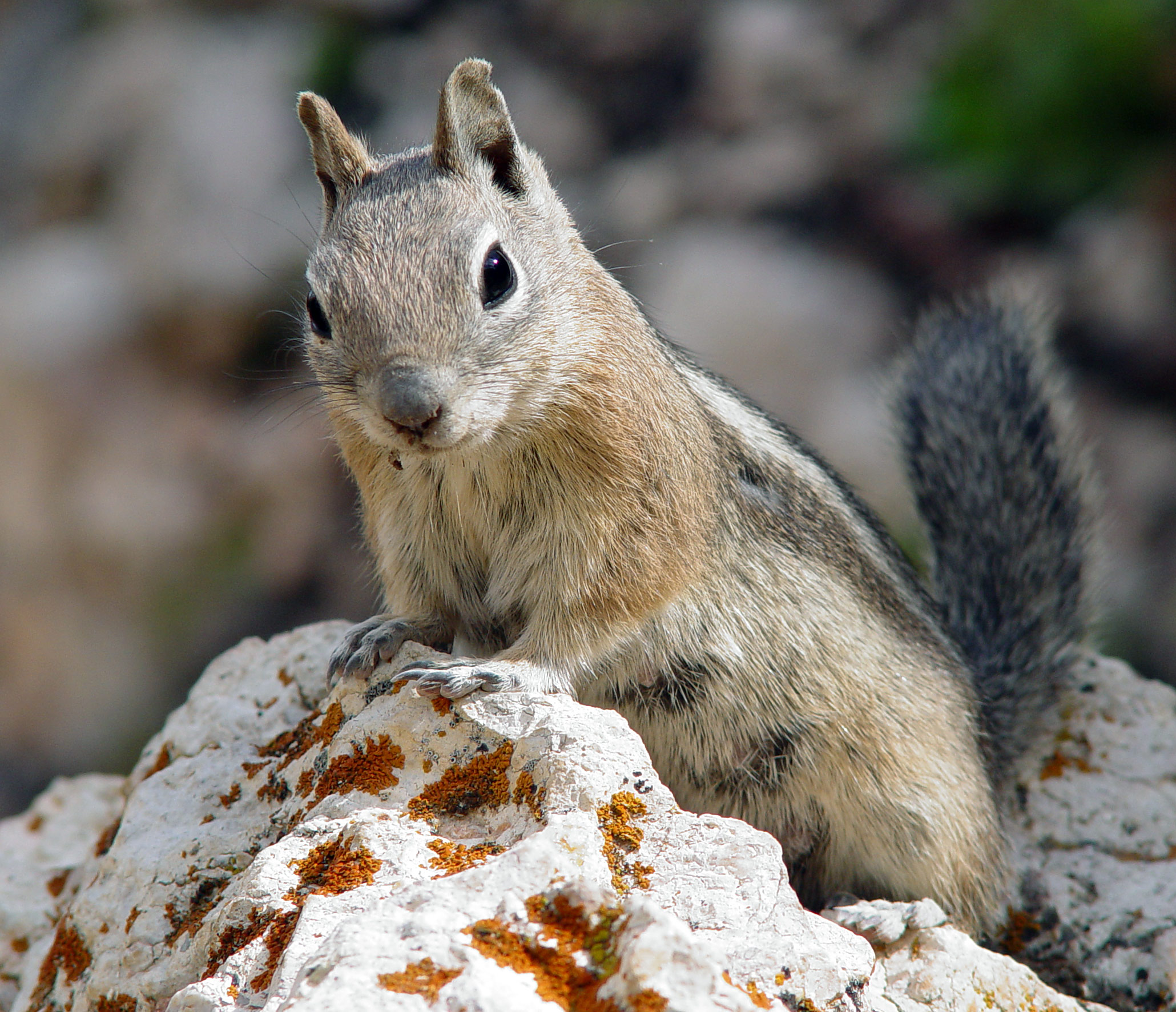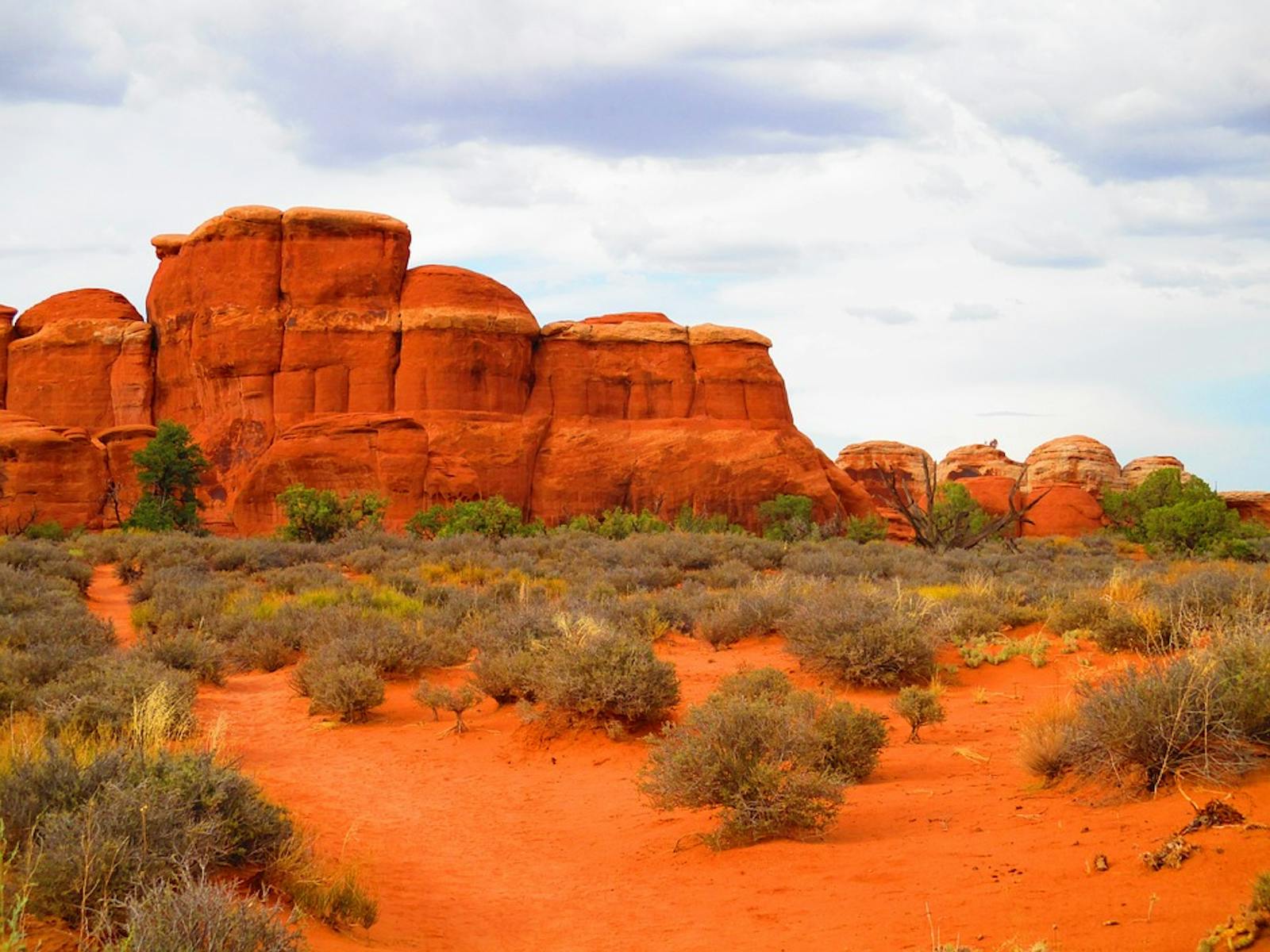Colorado Plateau Shrublands
The ecoregion’s land area is provided in units of 1,000 hectares. The protection goal is the Global Safety Net (GSN1) area for the given ecoregion. The protection level indicates the percentage of the GSN goal that is currently protected on a scale of 0-10. N/A means data is not available at this time.
Bioregion: Colorado Plateau & Mountain Forests (NA19)
Realm: Northern America
Ecoregion Size (1000 ha):
28,396
Ecoregion ID:
429
Protection Goal:
77%
Protection Level:
1
States: United States: UT, CO, AZ, NM
The Colorado Plateau represents some of the most magnificent and iconic landscapes on Earth. It can be described as an elevated, northward-tilted saucer, mostly surrounded by higher-elevation mountain ranges. The Colorado Plateau Shrublands ecoregion is bounded on the north by the Wyoming Basin Shrub Steppe and on the east by the Colorado Rockies Forests.
In this area, a long peninsula of the Colorado Plateau Shrublands extends from around Santa Fe, New Mexico, northward up the San Luis Valley of Colorado, bordered on three sides by the Colorado Rockies Forests. To the southeast lie the Western Shortgrass Prairie, Chihuahuan Desert, and Arizona Mountain Forests ecoregions.
The latter also forms the southern and southwestern boundary of the Colorado Plateau and occurs as disjunct blocks on mountain ranges embedded in the Plateau; for example, both the north (Kaibab Plateau) and south rims of the Grand Canyon are mostly within the Arizona Mountains Forests, whereas the canyon itself is within the Colorado Plateau ecoregion. The western boundary is with the Mojave Desert and Wasatch and Uinta Montane Forests ecoregions.
Elevations across the Colorado Plateau Shrublands ecoregion are mostly above 1,525 m, with peaks up to 3,960 m. The substantial topographic relief is largely due to the long-term erosive action of the Colorado River and its tributaries, which drain around 90% of the ecoregion. The climate of this ecoregion is arid to semiarid, with cold winters and summers with hot days and cool nights. Average annual precipitation is around 510 mm but is less than 260 mm in some areas. Vegetation zones across the ecoregion are distinct but somewhat irregular due to the complex topography. The lowest elevations are sparse semi-desert shrubland with much exposed soil and rock.
Among the plants in this zone are creosote bush, white bursage, brittle brush, catclaw acacia, ocotillo, western honey mesquite, big sagebrush, and blackbrush. Alkaline or saline soils support a salt desert community dominated by shadscale, greasewood, and Mormon tea. Slightly higher is pinyon-juniper woodland, which occupies a large fraction of the ecoregion.
Plants in this community include pinyon pine, Utah and one-seeded juniper, big sagebrush, snakeweed, Mormon tea, Utah agave, yuccas, prickly pear, winterfat, Indian ricegrass, dropseed, and needlegrass. Above this zone is the ponderosa pine zone, which forms the ecotone with the adjacent mountain forest ecoregions. Besides ponderosa pine, this community includes Gambel oak, New Mexico locust, mountain mahogany, fescue, and many other species.

The flagship species of the Colorado Plateau Shrublands ecoregion is the Abert's squirrel. Image credit: Creative Commons
Grand Canyon National Park, with its nearly 2,500 m elevation range, has some 1,737 species of vascular plants, 167 species of fungi, 64 species of moss, and 195 species of lichens distributed among its 129 defined vegetation communities. Packrat middens with fossil plant parts show that modern vegetation in the ecoregion developed mostly between 10,000 and 8,000 years ago, but with some much later arrivals.
Some 300 species of plants are endemic to this ecoregion. These include Jones cycladenia, Shultz stickleaf, Jane’s globemallow, Kachina daisy, and Welsh’s milkweed. Endemic vertebrates include the Kaibab squirrel (a subspecies of the more widespread Abert’s squirrel), banner-tailed kangaroo rat, the Utah subspecies of desert night lizard, and Gunnison sage grouse. Characteristic mammals include mule deer, puma, coyote, pronghorn, black-tailed jackrabbit, woodrat (packrat), rock squirrel, and gray fox.
Typical birds include bushtit, juniper titmouse, white-throated swift, pinyon jay, golden eagle, rock wren, canyon wren, green-tailed towhee, and lark sparrow. The California condor has been reintroduced—successfully so far—to the Vermillion Cliffs-Grand Canyon area.
From north to south, major protected areas in the ecoregion include Dinosaur National Monument, Arches National Park, Capitol Reef National Park, Canyonlands National Park, Grand Staircase-Escalante National Monument, Glen Canyon National Recreation Area, Grand Canyon National Park, and Petrified Forests National Park. Surprisingly, however, only 11% of this spectacular ecoregion is protected, with another 54% of the ecoregion outside protected areas still essentially intact.
Overgrazing by livestock, mining for coal and uranium, agriculture, dams, and invasive exotic species are primary threats to this ecoregion. Excessive recreation and tourism also pose problems.
Priority conservation actions for the next decade are 1) greatly expand the network of protected areas to encompass at least 50% of the ecoregion and represent all ecosystem types – this will help relieve tourist pressure on existing parks; 2) promote recovery of rare species, such as the California condor and American bison, and reintroduce extirpated species such as Mexican wolf and grizzly bear; and 3) control invasive non-native species.
Citations
1. Ricketts, Taylor H., Dinerstein, Eric, Olson, David M., Loucks, Colby J., et al. 1999. Terrestrial Ecoregions of North America. Island Press Inc, Washington D.C., USA.
2. Colorado Plateau Ecoregion. Landscope America. http://www.landscope.org/explore/natural_geographies/ecoregions/Colorado%20Plateau/


